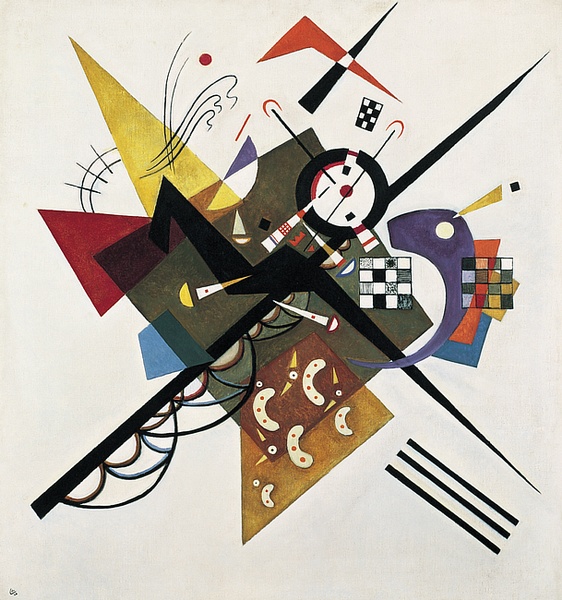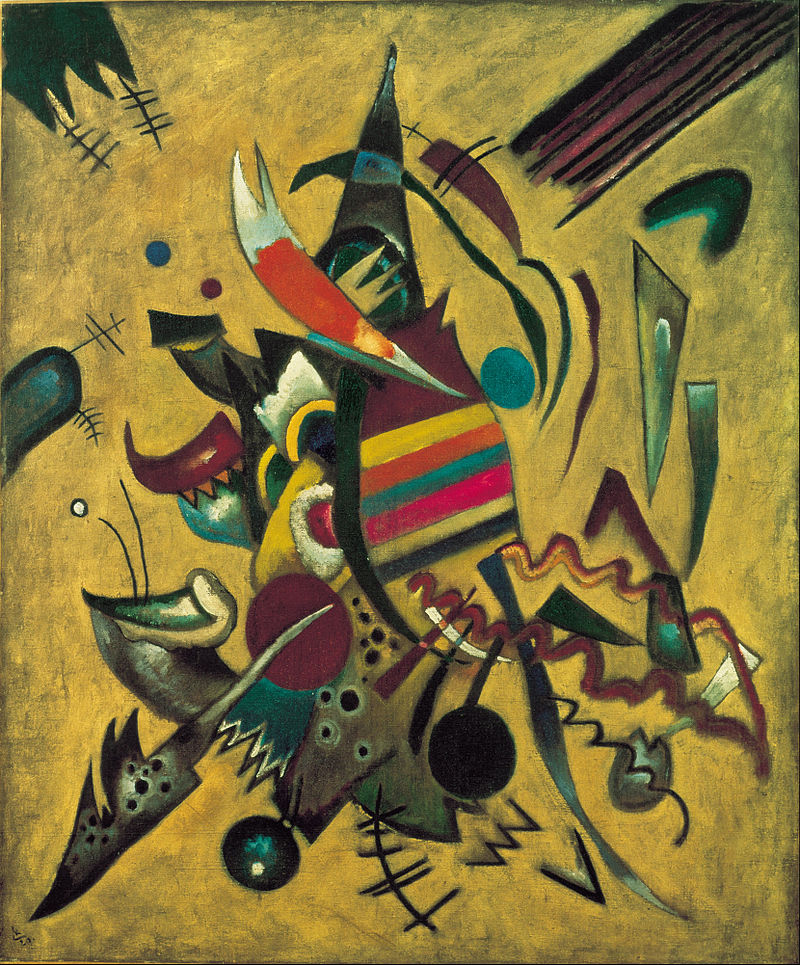Wassily Kandinsky biography
Russian-born Wassily Kandinsky founded abstract art in the late 19th and early 20th centuries. His distinctive perspective on the shape and function of art highlighted the synthesis of the visual and the auditory. He heard sounds as color, and this unusual perception was a guiding force in the evolution of his artistic style.
Born in Moscow in 1866, the artist did not seriously pursue his artistic career before age 30. He had studied law, economics, and ethnography at the University of Moscow, becoming a professor of law upon graduation. It was during his time at the college he reprised his childhood interest in art, and in particular, the symbolic character of color and its religious implications.
He experienced a type of epiphany upon seeing a Monet exhibit in Moscow. Initially put off by the artist's Impressionistic Haystacks paintings, Kandinsky found nevertheless that Monet's use of color impacted him in a significant manner, taking on an almost mythic power. During the same period, the artist attended a performance of Wagner's opera, "Lohengrin," which had a similarly strong effect on his sensibilities. It sparked a synesthetic experience where the notes that he heard became colors and visual images, a perception that could instruct his notions about art.
After only three decades of instruction, Kandinsky registered in a Munich art school to study with Anton Azbe, a Slovenian Realist whose forte was figure drawing. In Azbe's studio, Kandinsky worked beside fellow Russian Alexej von Jawlensky, a future Expressionist who familiar his new friend with the town's avant-garde society.
After two decades of tutelage, Kandinsky took a year to hone his craft before entering the Munich Academy to study with Franz von Stuck, a demanding traditionalist who had been the city's leading painter at the moment. The master's emphasis on Symbolism in his work, in addition to his focus on creativity, proved inspirational to his pupils.
Kandinsky and some of his colleagues founded an artists' group named Phalanx in 1901, a response to the restrictive status quo of the Munich art scene. In 1903, the artist painted his first landmark art, "Der Blaue Reiter" or The Blue Rider, an Impressionistic scene of a guy in a blue cape astride a white horse.
In this first decade of the 20th century, the artist developed a progressively innovative style that reflected the consequences of these schools as Fauvism, Pointillism and Expressionism. His characters became less distinct, his compositions progressively planar. In these 1908 pieces as "Munich-Schwabing with the Church of St. Ursula" and"Autumn Study Near Oberau," the interplay of color took precedence over traditional form. In 1909, Kandinsky was instrumental in founding Neue Kunstlervereinigung Munchen, or New Artists' Association of Munich, a group of radical artists whose daring strategy was far removed from the mainstream art of the age.
The artist's budding abstract design started to blossom in this period with functions that de-emphasized traditional boundaries like line and form, focusing rather on the communication of emotion through the juxtaposition of color. In 1910, Kandinsky finished an untitled watercolor that art experts consider to be his first truly abstract painting.
Like his Swiss buddy painter Paul Klee, Kandinsky was a gifted musician, and his abstract paintings are often described as 'painted music.' However, Kandinsky was determined that this wasn't correct. Similar to music, which does not have any concrete form but is a direct reflection of the composer's senses, Kandinsky's abstract art sought to remove the intermediary, objective world and depict his inner vision right on the canvas, expressed in terms of color and movement.
In 1911, the New Artists of Munich rejected one of Kandinsky's entrances for their exhibit. He reacted by establishing a rival exhibition for The Blue Riders, a new group he formed together with German painter Franz Marc and these Expressionists as Jawlensky, Auguste Mack, and Gabriele Munter. The team sponsored three displays and published "The Blue Rider Anthology" but dissolved in 1914 with the arrival of World War I.
Kandinsky's first publication exploring abstract art concept, "Concerning the Spiritual in Art," was published in 1910. In it, he explained the method behind what many critics of the time believed to be his insanity: his revolutionary approach to visual art. From the treatise, Kandinsky attempts to vanquish what he terms the nightmare of materialism in favor of educated spiritualism in artwork and makes a case for the similarity of audio and visual art concerning expression.
The artist used musical phrases such as "improvisation" and "composition" in the names of his pre-war paintings, highlighting the connection between the two art forms. The critical response of the mainstream art community to Kandinsky's first abstract attempts was uncharitable at best, and the artist knew it to gain approval for his work; he couldn't abruptly sever all connections to the convention.
Because of this, a few of the pieces he produced during the second decade of the 20th century kept a few recognizable items. By way of instance, Winter Landscape from 1909 contains the outline of a home and triangular trees while Sketch 160A from 1912 includes a stylized picture of a troika pulled by a trio of horses, which can be represented by three lines and three indistinct heads.
He also led the Moscow Museum for Pictorial Culture. In his art, he had been drawing ever nearer to complete abstraction.



